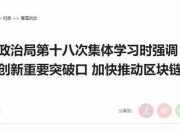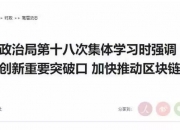公元1300年,"人的臉,面容; 面部外貌或表情; 相似,形象",源自古法語 face "臉,容貌,外貌"(12世紀),源自通俗拉丁語 *facia(也是意大利語 faccia 的來源),源自拉丁語 facies "外貌,形態,形狀",其次是"面容,表情",可能字面上是"施加在某物上的形態",與 facere "製造"(源自 PIE 詞根 *dhe- "放置,放置")相關。
(b) Face or face; similar, image & quot; from ancient French face & quot; face, face, appearance & face & face & look & ; 12 centuries) from popular Latin ; facia (also Italian > > image > & quot > face > face > image > > image > > > image > >foreign nonslat < < > < < > > > < > > data > > root > ;
取代了古英語 andwlita "臉,容貌"(源自 wlitan "看,看"的詞根)和 ansyn, ansien,通常的詞(源自 seon "看"的詞根)。印歐語系中表示"臉"的詞通常基於"外貌,外觀"的概念,並且大多數是從表示"看,看"的動詞派生而來(就像古英語的詞,希臘語 prosopon,字面上是"向前看",立陶宛語 veidas,源自 *weid- "看"的詞根等)。但在某些情況下,就像這裏一樣,"臉"的詞意味着"形態,形狀"。在法語中,17世紀放棄了將 face 用於"頭部前部"的用法,取而代之的是 visage(更早的是 vis),源自拉丁語 visus "視覺"。
It replaces the ancient English
從14世紀末開始,表示"外表(與其他現實相對比)"; 也從14世紀末開始,表示"任何事物的前部或正面"; 還有"表面(地球或海洋的),範圍(城市的)"的意思。印刷術上指"形成字母的字體的一部分"的意義來自於1680年代。
Starting at the end of the 14th century, it means & quot; appearance (comparable to other realities) & quot; & also beginning at the end of the 14th century, & quot; front or front of anything & quot; and & quot; surface (of the Earth or the sea), area (of the city) & quot; meaning. Printed & quot; part of the letter making & quot; meaning from the 1680s.
Whan she cometh hoom, she raumpeth in my face And crieth 'false coward.' [Chaucer, "Monk's Tale"]
當她回家時,她衝着我大喊"懦夫"。[喬叟,《修道士的故事》]
Face to face 可追溯到14世紀中葉。Face time 可追溯到1990年。lose face "失去威望"(1835年)源自中國 tu lien; 因此也有 save face(1898年; 參見 save)。show (one's) face "露面,出現"可追溯到14世紀中葉(shewen the face)。make a face "因厭惡、嘲笑等而改變面部表情"可追溯到16世紀60年代。作爲欺騙的象徵, Two faces under one hood 可追溯到15世紀中葉。
Face to face can be traced back to the middle of the 14th century. /i> can be traced back to 1990. >; Two fases in a hode is neuer to tryst. ["Awake lordes," 1460]
帽子裏的兩個面孔永遠不會相信。["Awake lordes," 1460]
注册有任何问题请添加 微信:MVIP619 拉你进入群

打开微信扫一扫
添加客服
进入交流群


















发表评论